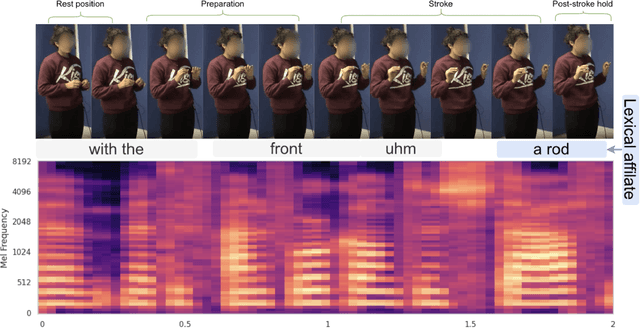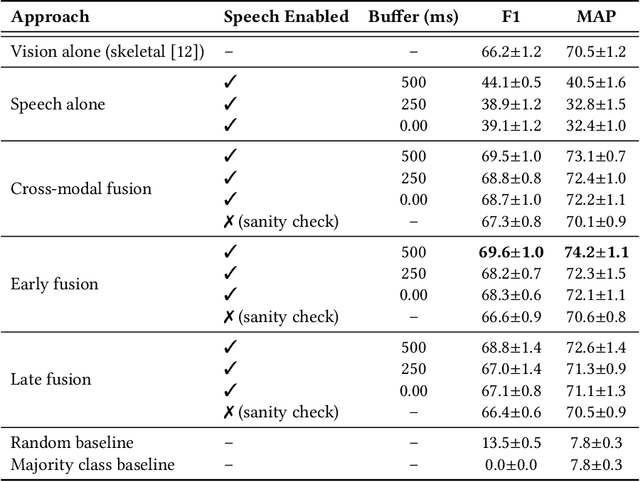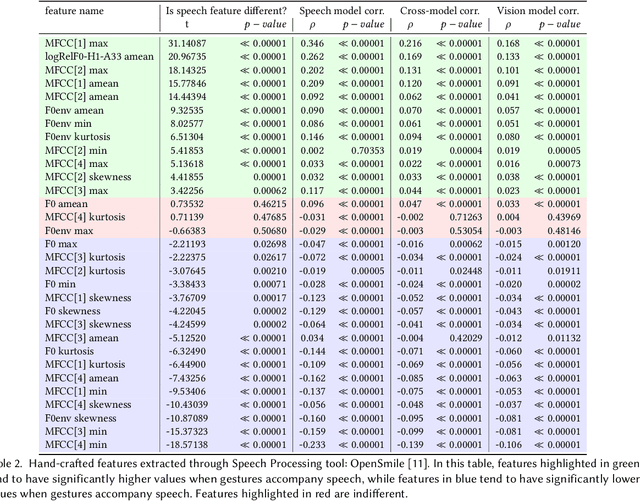Anna Wilson
Leveraging Speech for Gesture Detection in Multimodal Communication
Apr 23, 2024



Abstract:Gestures are inherent to human interaction and often complement speech in face-to-face communication, forming a multimodal communication system. An important task in gesture analysis is detecting a gesture's beginning and end. Research on automatic gesture detection has primarily focused on visual and kinematic information to detect a limited set of isolated or silent gestures with low variability, neglecting the integration of speech and vision signals to detect gestures that co-occur with speech. This work addresses this gap by focusing on co-speech gesture detection, emphasising the synchrony between speech and co-speech hand gestures. We address three main challenges: the variability of gesture forms, the temporal misalignment between gesture and speech onsets, and differences in sampling rate between modalities. We investigate extended speech time windows and employ separate backbone models for each modality to address the temporal misalignment and sampling rate differences. We utilize Transformer encoders in cross-modal and early fusion techniques to effectively align and integrate speech and skeletal sequences. The study results show that combining visual and speech information significantly enhances gesture detection performance. Our findings indicate that expanding the speech buffer beyond visual time segments improves performance and that multimodal integration using cross-modal and early fusion techniques outperforms baseline methods using unimodal and late fusion methods. Additionally, we find a correlation between the models' gesture prediction confidence and low-level speech frequency features potentially associated with gestures. Overall, the study provides a better understanding and detection methods for co-speech gestures, facilitating the analysis of multimodal communication.
 Add to Chrome
Add to Chrome Add to Firefox
Add to Firefox Add to Edge
Add to Edge